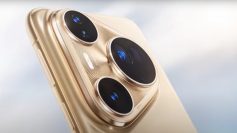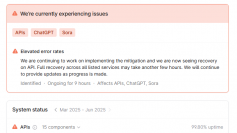A new ventilator designed by engineers working at NASA's Jet Propulsion Laboratory has been authorized for emergency use by the U.S. Food and Drug Administration (FDA). The ventilator, called VITAL (Ventilator Intervention Technology Accessible Locally), is designed specifically for COVID-19 patients, and its design is being offered for free for the duration of the coronavirus crisis.
The VITAL design is meant as an intubation ventilator, which means that a patient has to be sedated first before a breathing tube is inserted all the way down to their airway. It's reserved for patients exhibiting serious symptoms of COVID-19 and should only be used to free up the availability of existing, fully approved ventilator hardware in the case of extreme shortages.
JPL designed the ventilator in a way that it uses "far fewer" parts than existing ventilators being used in hospitals today. According to NASA, it can be assembled faster and requires less maintenance. Unlike traditional hardware that can last years, however, VITAL can only last between three or four months and should never be used in non-COVID-19 cases.
To create VITAL, the JPL team tried to use as many common, off-the-shelf parts as possible, such as valves, motors, electronic displays, and tubing. That way, anyone manufacturing the device in the future wouldn't need to special order anything needed for a more sophisticated ventilator. The team found that companies and vendors were eager to help provide supplies that could be scalable. And when they didn't have what JPL needed, they gave them references.
NASA's JPL is seeking commercial manufacturing partners for the hardware now that it has its authorization, however, in order to get it built in large numbers for distribution to hospitals in need.
VITAL is among the several of the medical hardware projects designed to specifically address shortages caused by the coronavirus pandemic. With NASA JPL's pedigree, and its ability to serve in cases of most dire need, NASA's ventilator definitely seems like one of the better-engineered options out there.
It's unclear how the JPL team will proceed when the VITAL ventilator is shipped out to hospitals. Members of the team put their regular projects on hold in order for the breathing apparatus to materialize. They'll likely go back to designing interplanetary space probes very soon, but they've been buoyed by their brief stint in the medical world.
JPL engineers developed the new ventilator in 37 days and tested it on April 21 at the Icahn School of Medicine at Mount Sinai in New York.






